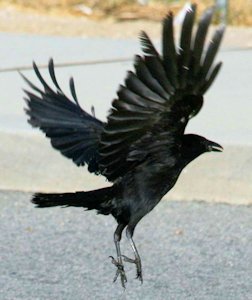| Wings: The Key to Flight | |

|
The evolution of wings for moving from one tree to another became, without a doubt, the major turning point in bird development. Wings have allowed birds freer movement over much wider areas than has ever been possible for purely aquatic or terrestrial organisms. In discussing flight, you might be tempted to compare the avian wing with that of an airplane, but we have to be careful not to take the analogy too far. An aircraft flies because of the airfoil properties of its solid wings; propulsion is provided by the engine, In contrast, birds have feathered wings that provide for both propulsion and efficient aerodynamics. An airfoil consist of any stabilizing surface designed to aid in lifting or controlling by making the use of the surrounding air currents; in a bird, the airfoil consists of its wings, individual feathers or both.
The wing provides the basic lifting surface of the bird, and its shape varies
according to the type of flight typical of the species. Each feather on a bird's
wing functions independently and allows the shape of the wing to be altered
during flight, permitting much freedom of movement. The actual size and shape
of a wing are determined mainly by the flight feathers.
|
| A Common Raven displays its primary feathers to gain maximum control and propulsion. | |
|
Aspect ratio
--- the ratio of a wing's length to its width -- becomes an important and
significant determinate of wing size. A long and thin wing indicates a wing
with a high aspect ratio.
A short and broad wing indicates a wing with a low aspect ratio.
|
|